Kia EV6 Wind RWD Road Test Review: Testing the volume seller

SIMI VALLEY, Calif. – We’ve driven the 2022 Kia EV6 quite a bit more than most newly introduced models, thanks to multiple RWD and AWD test cars on both coasts, plus our ongoing long-term test. To date, though, all of those have been the current range-topping GT-Line trim level that features different styling and upgraded interior materials. It’s also a less popular model. Scour dealership inventory and you’ll find GT-Lines are few and far between (though in greater supply than the base EV6 Light). Nope, the car you’re most likely to find is this, the 2022 Kia EV6 Wind. It’s the volume seller, a quasi-equivalent to the EX in other Kia models. So, what are you really giving up by sticking with the Wind?
Well, you definitely won’t be giving up range or performance. The Wind and GT-Line share the same battery and drivetrain options. The base rear-wheel-drive version tested here has a single motor connected to the rear axle that achieves a 310-mile range and produces 225 horsepower and 320 pound-feet of torque. The 0-60 time is 7.2 seconds, which not too long ago amounted to a pretty quick car. There’s no shortage of buh-bye passing power, and all that immediate electric torque always makes the EV6 RWD feel energetic while driving around town. I don’t disagree with Zac Palmer that it’s not really fun per se, and that you shouldn’t expect the rear driver to be the more performance-oriented one. If you want that full EV snap off the line – and 2 seconds zapped off the 0-60 time – you probably won’t regret paying an extra $4,000 or sacrificing 36 miles of range.

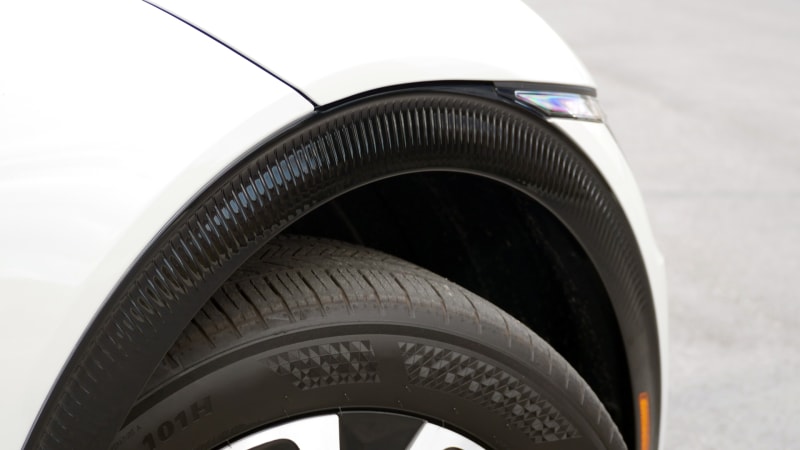

Again, all that applies to the EV6 Wind AWD, too. The GT-Line is mostly an appearance and equipment package – the upcoming 2023 Kia EV6 GT (no Line) is the 576-hp top dog version that goes above and beyond in a number of other performance ways. The only possible dynamic difference between the Wind and GT-Line is the wheels … maybe. The GT-Line is available with optional 20-inch wheels you can’t get on the Wind. It only comes with the 19-inchers standard on every EV6, including the GT-Line I drove back in Oregon. Maybe the bigger wheels could help the EV6 feel a bit more spry on a back road, but it would still feel like the very solid and heavy car that it is. I’d guess that the otherwise pliant ride quality would be adversely affected more.
OK, so the Wind and GT-Line drive the same, what about everything else? Outside, the Wind’s rocker panels and wheel arches are gloss black, with the latter featuring a ribbed pattern also found in the lower grille and trim bit under the KIA emblem. The GT-Line has body-colored pieces instead, plus mesh-like grille inserts within a different lower fascia. The lower rear fascia differs between the cars, as well, including an extra body-colored bit on the GT-Line. Perhaps the black wheel arches contribute to the Wind looking a little more SUV-like, but in general, the differences play more like “different” than “better” or “worse.”
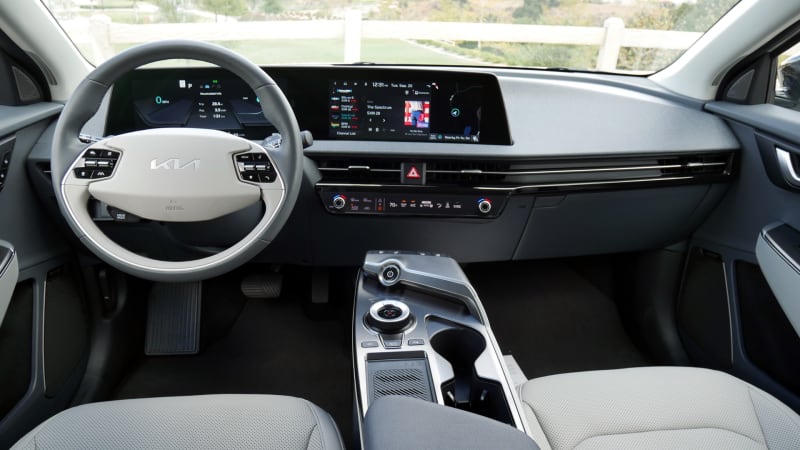
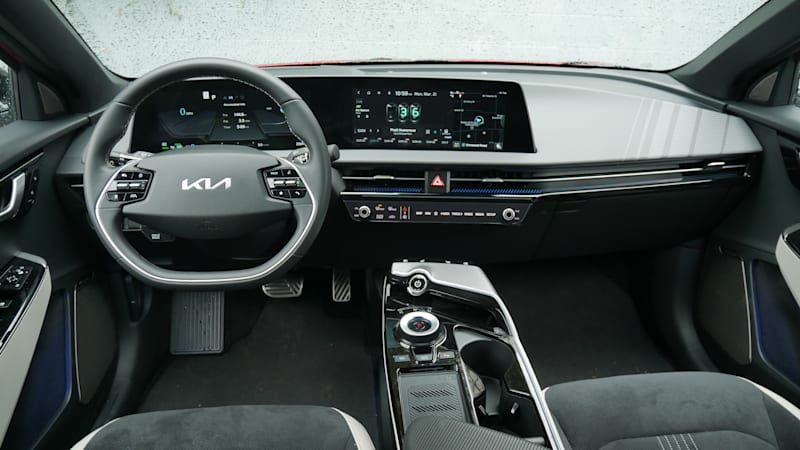
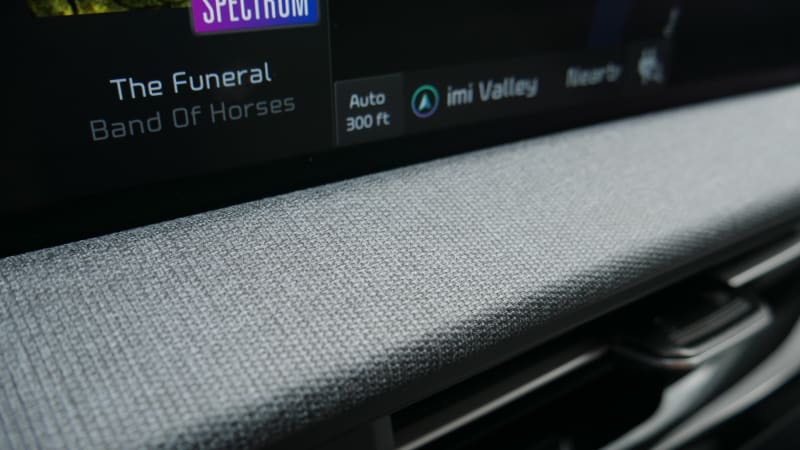
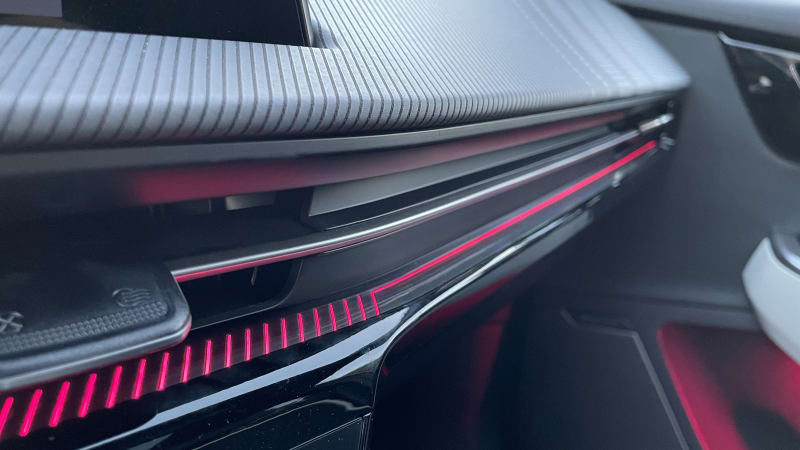
The interior is a different story: the GT-Line is better from an aesthetic perspective (above right). Multi-color ambient lighting adds a welcome bit of color to what is otherwise a piano-black piece of trim under the Wind’s air vents. The lines added to the dash top and center console armrest add even more visual flair missing from the Wind. Its dash top is made from a recycled fabric (above, bottom left) that looks like fabric from afar but feels like squishy plastic – there’s not really a judgement to be made here other than it’s not quite as interesting as the more visually dynamic if rubbery GT-Line trim. The GT-Line also gets a flat-bottom steering wheel (shrug).
Then there’s the upholstery. Both Wind and GT-Line come standard with “vegan leather” also known as “reasonably convincing but still fake leather made from petroleum-based vinyl.” It is not the same as the Kia Niro’s “vegan leather,” which is made from eucalyptus leaves. The Wind offers a choice of all black or the light-colored “Misty Gray” shown here with black on much of the dash, doors and seat backs. The GT-Line comes standard with black vegan leather accented by white vegan leather arcing around the seat and accenting the doors. Optional on the GT-Line, however, is a vegan leather and suede upholstery mix: either white vegan leather centers with black suede arcing around the seat, or what is shown in the pictures here, black suede centers with white vegan leather arcing around. Pleather is always on the doors, and in both, I would say the door trim looks and feels a bit cheap for a car in the $50,000 range that is otherwise convincingly premium.


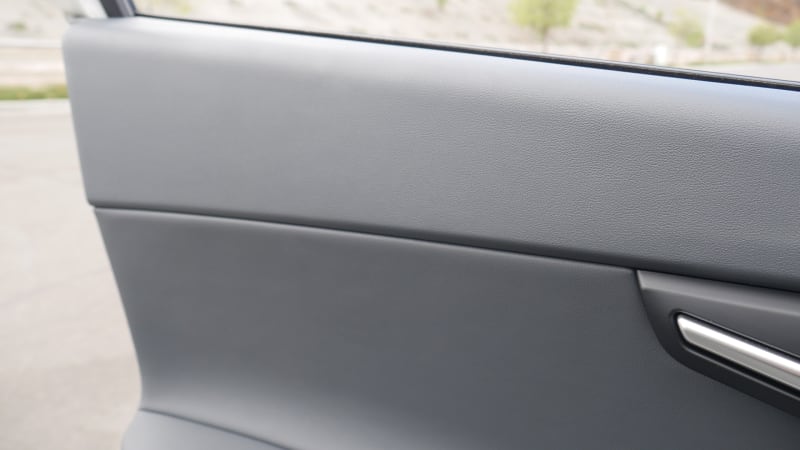

In terms of equipment, the Wind lacks the GT-Line’s automatically extending door handles. My wife in particular was not amused by the extra dexterity or extra hand needed to fumble them open without power assistance. “Why do these have to be fancy?” she pondered. Other added items are the augmented-reality head-up display and HomeLink garage door opener. And that’s it. There are no extra options available for the GT-Line, either, apart from the wheels.
The price difference comes down to $4,200, or $48,215 for the Wind RWD and $52,415 for the GT-Line RWD. Tack on about $4,000 for the dual-motor AWD, plus a heated steering wheel and heat-pump HVAC upgrade. For my money, I don’t think the GT-Line’s upgrades are worth that much. Sure, the interior is a bit snazzier and I’d rather have more body-colored exterior pieces – the black fenders don’t exactly turn the EV6 Wind into an X-Pro (though seriously, Kia, that’s an idea I want to see). Basically, you’re not losing much by sticking with the Wind, and it certainly doesn’t diminish our affection for this exceptional electric vehicle. The bigger question remains: RWD or AWD?
Related Video:



